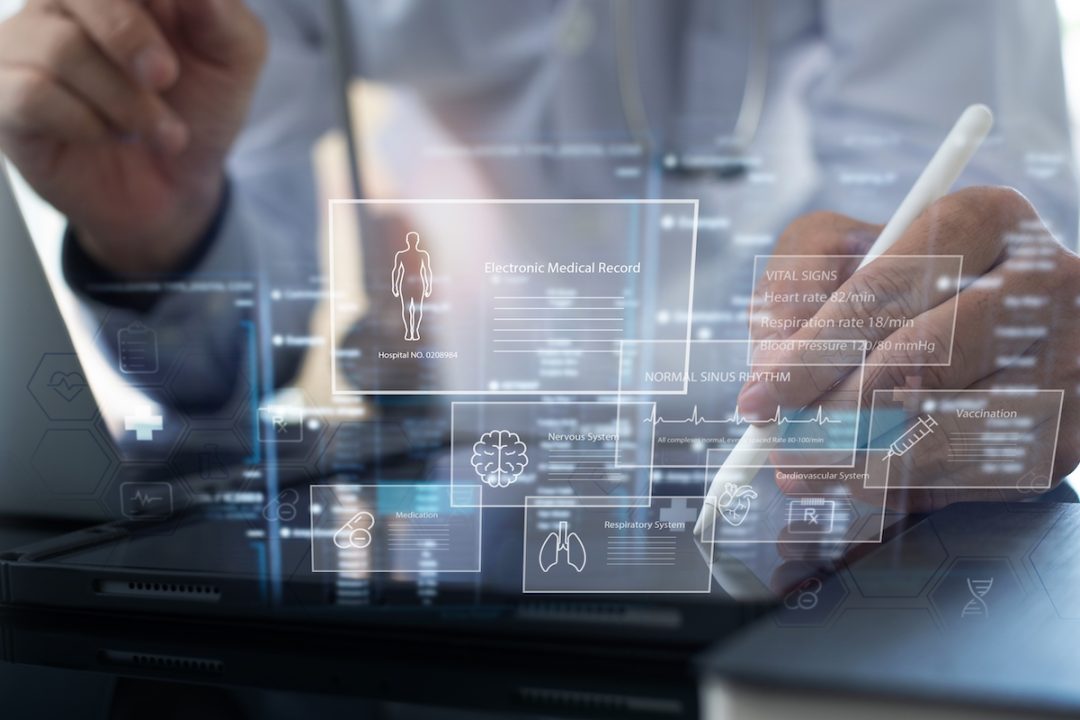
The Department of Health and Human Services (HHS), under Secretary Robert F. Kennedy Jr., has just announced a new initiative ostensibly aimed at an “understanding of autism” and other chronic diseases. Run in partnership with the National Institutes of Health (NIH) and the Centers for Medicare & Medicaid Services (CMS), the effort will “build a real-world data platform enabling advanced research across claims data, electronic medical records, and consumer wearables.”
But while the stated purpose is to improve scientific understanding and outcomes for families, the initiative marks a significant step toward centralizing vast troves of Americans’ medical and behavioral data. What HHS is building looks like much more than a research tool. It’s a massive federal system that will store and analyze the most sensitive personal information at a scale never seen before, and with the potential to be weaponized in ways no one is prepared to confront.
The Platform
The platform, announced in April, will merge multiple streams of health records into what NIH Director Dr. Jay Bhattacharya described as a secure data vault available to researchers. At the time, he explained that the goal is to overcome duplication and inefficiency:
The idea of the platform is that the existing data resources are often fragmented and difficult to obtain. The NIH itself will often pay multiple times for the same data resource.
Now, Secretary Kennedy has gone further, touting the potential to identify autism’s root causes “with full transparency and accountability.”
Yet that transparency appears to stop short of the public. And what the federal government is constructing may have consequences far beyond medical research.
Claims Data: Granular and Government-owned
Medicare and Medicaid claims data form one of the central pillars of the new HHS platform. These records document the procedures performed, the providers involved, and the locations and dates of service.
Medicare processes over one billion fee-for-service claims every year. These span services for roughly 66 million Americans, mostly seniors. Medicaid, covering more than 71 million low-income individuals and families, generates a similarly massive volume of claims.
Each claim tells a story. It includes the patient’s age, sex, race, diagnostic codes, procedure codes, provider details, dates of service, and billing amounts. Together, these records form a time-stamped, full-body ledger of a person’s medical life.
Federal officials suggest these claims will be de-identified in full compliance with “privacy and security laws.” But data this rich doesn’t necessarily stay anonymous — especially when combined with other sources. The concern isn’t just about who might re-link the data. It’s about the precedent being set.
Electronic Health Records: From Local to Federal
The platform will also incorporate electronic health records (EHRs). According to government sources, EHRs are real-time, patient-centered records. They make information instantly available “whenever and wherever it is needed.” They bring together everything about a patient’s health in one place.
In practice, that means diagnoses, test results, medications, allergies, immunizations, treatment plans, and provider notes — stored in a single digital file. And what once stayed in a doctor’s office now enters a centralized federal system.
EHRs were designed to improve care and coordination. But in the wrong hands, that much detail becomes a full medical dossier. Combined with other datasets, it paints a nearly complete picture of a person’s physical and mental health.
Wearables and Real-time Surveillance
The inclusion of wearable data raises new concerns about the boundaries of HHS’ inquiry. Consumer devices like fitness trackers and smartwatches can collect sleep cycles, movement patterns, heart rate, and, in some cases, voice data.
Unlike claims or EHRs, this data is continuous, behaviorally rich, and often gathered without any clinical context. In the hands of researchers, it may help track developmental trends. In the hands of a centralized authority, it becomes a tool for behavioral modeling, population-level surveillance, or — potentially worse — political misuse.
Dr. Bhattacharya has previously confirmed the platform will incorporate “private sources” alongside Medicare and Medicaid data. While he didn’t detail how, access to wearable data would likely require partnerships with companies like Fitbit, Apple, or Garmin — through grant programs, pilot studies, or data-sharing agreements. Participants in such studies often consent to share their biometric data, though many may not fully grasp just how much they’re handing over.
For example, NIH’s “All of Us” program already partners with Fitbit to collect wearable health data from study volunteers.
Right now, the federal government claims this is for research only. But once centralized, data infrastructure rarely shrinks. It expands.
Add-ons: Genomics and Lab Results
In addition to these sources, the new data platform will include lab results and genomic data from the Department of Veterans Affairs (VA) and the Indian Health Service, according to earlier statements by Dr. Bhattacharya.
This kind of data isn’t just predictive — it’s permanent. DNA can’t be changed, revoked, or easily anonymized.
That raises obvious privacy concerns. But the deeper issue is one of governance. What should the federal government be allowed to know, store, and use — potentially forever — about Americans’ genetic profiles? And if the answer is “whatever helps the science,” then what limits remain?
There Are Other Ways
The Constitution never envisioned HHS — let alone a real-time federal archive of Americans’ most private health metrics. Public health was meant to be local — accountable, restrained, and grounded in consent.
The U.S. doesn’t need a federal data hub to study autism and other conditions. Some states, like Pennsylvania, already run surveillance programs with universities and children’s hospitals. These efforts collect meaningful data, follow ethical rules, and reflect the communities they serve.
Families opt in. Researchers answer to local boards. The process respects choice.
Additionally, the medical literature behind the most obvious causes of autism, like childhood vaccines, is already vast. And it can be expanded and deepened without funneling millions into a federal digital system.
If HHS truly wanted answers, it would support what’s legal, and what already works. Instead, it’s building a national platform with no clear limits, no local control, and no apparent way out.
Risks of Surveillance
The HHS autism platform is not just a research tool. It’s a shift in how medical information is governed, accessed, and controlled. Once the infrastructure exists to store and analyze the total health histories of millions of Americans, it will be difficult — if not impossible — to unwind.
This isn’t speculation. It’s a documented pattern across sectors: surveillance powers, once granted, expand. Add to that the administration’s broader effort to integrate federal digital systems — linking medical, financial, and social records — and the risks become clear.
Understanding autism and other chronic diseases plaguing America is a noble goal. But doing so by centralizing genomic, behavioral, and clinical data under federal authority risks creating an irresistible surveillance tool for control, profiling, or political abuse.





